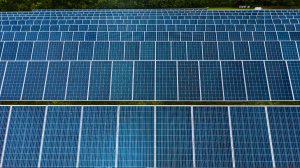Progress being made in reforming South African electricity sector, assures Presidency official
Major changes were indeed under way in the country’s electricity sector, South African Presidency project management head Rudi Dicks assured the RES4Africa Energy Security Conference in Cape Town, on Monday. “There is a risk that we miss the [reform] wood for the [crisis] trees,” he said.
South Africa has suffered for years from scheduled power cuts, called loadshedding, imposed by the State-owned national electricity utility Eskom, because of its lack of generating capacity. “Loadshedding is the result of poor policy decisions or actions not taken,” he explained.
Dicks pointed out that, when Eskom had an operating reserve margin of 10%, loadshedding did not happen. But the utility had not been able to achieve such a margin for two or more years. “We essentially need to keep the reserve margin at 10%,” he affirmed. (Five to ten years ago, Eskom had maintained a reserve margin of 15%; that wasn’t even an ambition today.)
Not counting poorly maintained old power plants, several major generating units had gone offline over the past six months and remained offline. These included units at the new-build Medupi and Kusile coal-fired power plants and Unit 1 at the Koeberg nuclear power plant, which is undergoing extended maintenance ahead of an application to extend the life of the power station. This had taken about 4 500 MW of generating capacity offline.
In addition, there were the old units that went offline because of historical underinvestment in maintenance, plus the loss of skills in Eskom. “We need to stop this bleeding of capacity,” he affirmed, and develop new capacity. As for maintenance, when units were taken offline, there was a need to ensure that they were subject to proper maintenance regimes so that they were, in fact, properly maintained.
Sabotage at, and organised crime in the supply chains for, the coal-fired power stations were real problems, he pointed out. Power stations received poor-quality coal, which included stones and other waste material mixed in with the coal, which damaged the power station machinery. Spare parts were stolen and sold. Crime and corruption was “rampant”.
“But we’ve made significant progress,” stated Dicks. The limit on private-sector embedded electricity generation had been lifted from 1 MW to 100 MW, and then abolished outright. The Presidency had then discovered that would-be investors were mired in red tape, severely hampering progress. So, the Presidency worked with the Minerals Council South Africa (as the representative of South African mining, the business sector most likely to make major investments in embedded generation) to deal with this problem.
As a result, the pipeline of private-sector electricity generation projects had grown, over the past 12 months, from about 3 500 MW to more than 9 000 MW. These were projects that the Presidency was tracking and which were registered with the National Electricity Regulator of South Africa (Nersa) and had completed all other approvals.
They were all expected to proceed to construction. Projects with a total capacity of 1 073 MW had been registered with Nersa in the first two months of this year alone, including five projects of more than 100 MW.
“These projects must proceed as quickly as possible into construction,” he said. His office was hopeful that more than 1 000 MW of new, private sector, renewable energy capacity would come online by the end of this year. There was the potential for 30 000 MW of private sector generating capacity, which could come on stream over the coming years.
“On the reform side, we’ve made huge progress,” he affirmed. The creation of a national transmission company was now moving forward. A board would soon be appointed.
Initially, this transmission company would be owned by Eskom, but would subsequently be completely separated from Eskom and established as a totally independent company.
Article Enquiry
Email Article
Save Article
Feedback
To advertise email advertising@creamermedia.co.za or click here
Comments
Latest Multimedia
Showroom
ATI systems comprises five divisions: electrical assemblies, drives and controls, feedback sensors, enclosures, and strip guiding.
VISIT SHOWROOMAstore Keymak is one of South Africa’s leading suppliers of high-quality Thermoplastic Pipeline Systems, with branches in the major provinces.
VISIT SHOWROOMAnnouncements
What's On
Subscribe to improve your user experience...
Option 1 (equivalent of R125 a month):
Receive a weekly copy of Creamer Media's Engineering News & Mining Weekly magazine
(print copy for those in South Africa and e-magazine for those outside of South Africa)
Receive daily email newsletters
Access to full search results
Access archive of magazine back copies
Access to Projects in Progress
Access to ONE Research Report of your choice in PDF format
Option 2 (equivalent of R375 a month):
All benefits from Option 1
PLUS
Access to Creamer Media's Research Channel Africa for ALL Research Reports, in PDF format, on various industrial and mining sectors
including Electricity; Water; Energy Transition; Hydrogen; Roads, Rail and Ports; Coal; Gold; Platinum; Battery Metals; etc.
Already a subscriber?
Forgotten your password?
Receive weekly copy of Creamer Media's Engineering News & Mining Weekly magazine (print copy for those in South Africa and e-magazine for those outside of South Africa)
➕
Recieve daily email newsletters
➕
Access to full search results
➕
Access archive of magazine back copies
➕
Access to Projects in Progress
➕
Access to ONE Research Report of your choice in PDF format
RESEARCH CHANNEL AFRICA
R4500 (equivalent of R375 a month)
SUBSCRIBEAll benefits from Option 1
➕
Access to Creamer Media's Research Channel Africa for ALL Research Reports on various industrial and mining sectors, in PDF format, including on:
Electricity
➕
Water
➕
Energy Transition
➕
Hydrogen
➕
Roads, Rail and Ports
➕
Coal
➕
Gold
➕
Platinum
➕
Battery Metals
➕
etc.
Receive all benefits from Option 1 or Option 2 delivered to numerous people at your company
➕
Multiple User names and Passwords for simultaneous log-ins
➕
Intranet integration access to all in your organisation

















